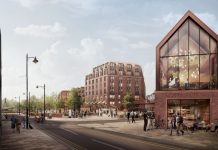Demand for regional offices has returned to pre-recessionary levels over the past three years, according to research from leading real estate adviser, Bilfinger GVA.
According to the newly published ‘Offices, Who Needs Them?’ report, the current positive demand for offices in regional centres is predicted to continue, albeit with a short-term drop in activity as the market comes to terms with the medium-term implications of Brexit.
The devolution of power to the city regions and further investment into the Midlands Engine are understandably playing a role in creating greater confidence and many more opportunities for occupiers and inward investors, which in turn will drive economic growth.
This is backed-up in Birmingham by improvements being made to the city’s transport infrastructure, notably through the extension to the Midland Metro Tram; planned expansion of Birmingham Airport; and delivery of the first phase of HS2 with stop at Arden Cross near Solihull, and Curzon Street in Birmingham city centre.
Charles Toogood, Senior Director at Bilfinger GVA, said: “There is an outstanding level of activity in Birmingham at the moment, with the delivery of Arena Central and Paradise providing a significant boost to the city’s provision of high quality, contemporary workplace environments.
“Coupled with the refurbishments currently taking place at 2 Cornwall Street and The Lewis Building we are seeing the delivery of a significant level of high specification space that is appealing to both inward investors and indigenous occupiers seeking alternative accommodation.
“The refurbishment of civic spaces such as Centenary Square, and Chamberlain Square as part of the Paradise redevelopment ensures that we are offering both the buildings and the civic spaces to reinforce the message that Birmingham is an outstanding location in which to do business.”
Birmingham is also predicted to continue to benefit from ‘northshoring’, the practice of relocation from London and the south east to the regions, with Deutsche Bank and HSBC having both already taken significant levels of space well in excess of 100,000 sq ft.
While office demand is still dominated by the traditional occupational sectors, there is strong growth in the knowledge economy, including the TMT sector which is well catered-for in Birmingham thanks to the Science Park and availability of spaces in Digbeth, the Jewellery Quarter and around Curzon and Eastside.
In terms of the future pipeline, there is currently some 1 million sq ft of available stock that has been committed to and will be ready for occupancy by 2019.
The Government’s current programme of rationalisation of its public sector departments and creation of super-hubs based in regional cities is expected to add a further 7.4 million sq ft of requirement between 2018 and 2021.
The report examines trends in office occupancy over a 10 year period, sampling data from 11 of the UK’s regional cities.
Between 2006 and 2015, take-up across the 11 cities averaged 8.3 million sq ft pa. While activity was more muted from 2009 to 2012 with an average of 7.3 million sq ft pa, there has been sustained year-on-year growth since 2013, with take-up rising to 10.4 million sq ft in 2015, 24% above the ten year average.
Carl Potter, Senior Director and National Head of Offices at Bilfinger GVA, said: “The health of the regional office market is driven by inward investment and employment growth and the Chancellor’s Autumn Statement in November will set out the extent and make-up of fiscal impetus. Nevertheless it is also dependent on the churn of indigenous business, which accounts for the majority of transactional activity.
“The expiry of long-term 15 and 25-year leases, combined with a trend towards shorter leases and breaks will continue to drive this activity. A greater level of lease events will also encourage landlords to make decisions on re-gearing, re-letting, refurbishing or changing the use of their assets.”






















